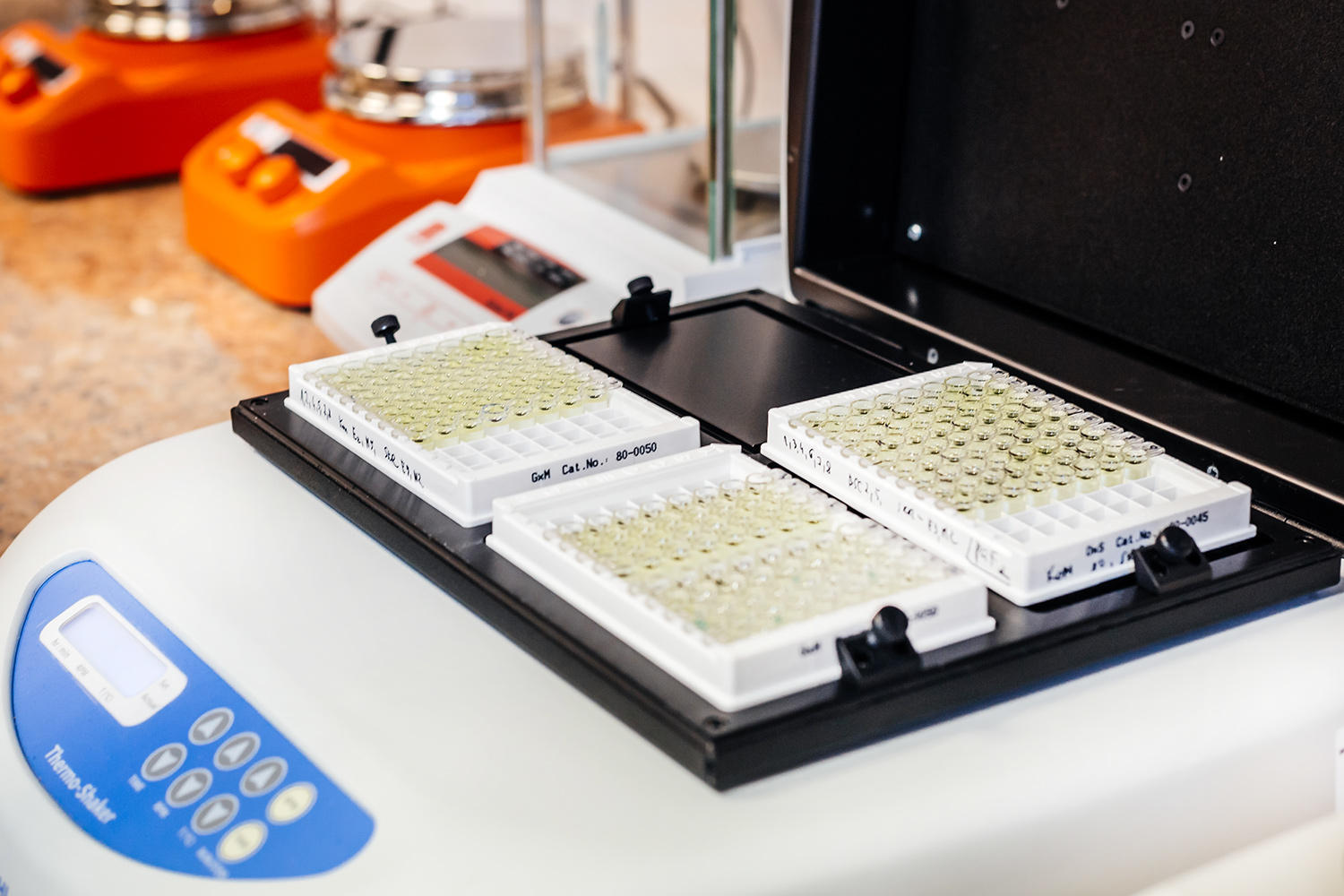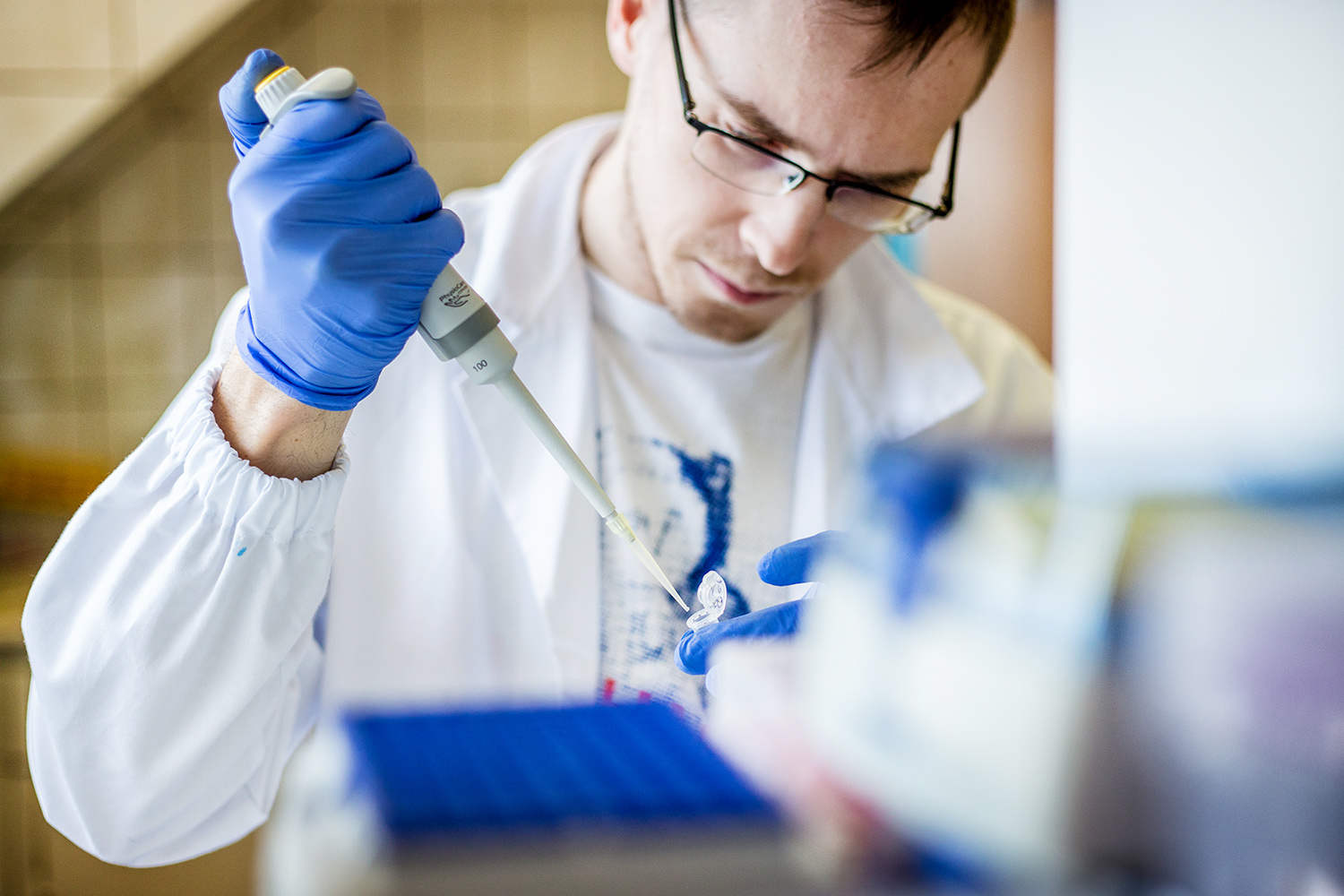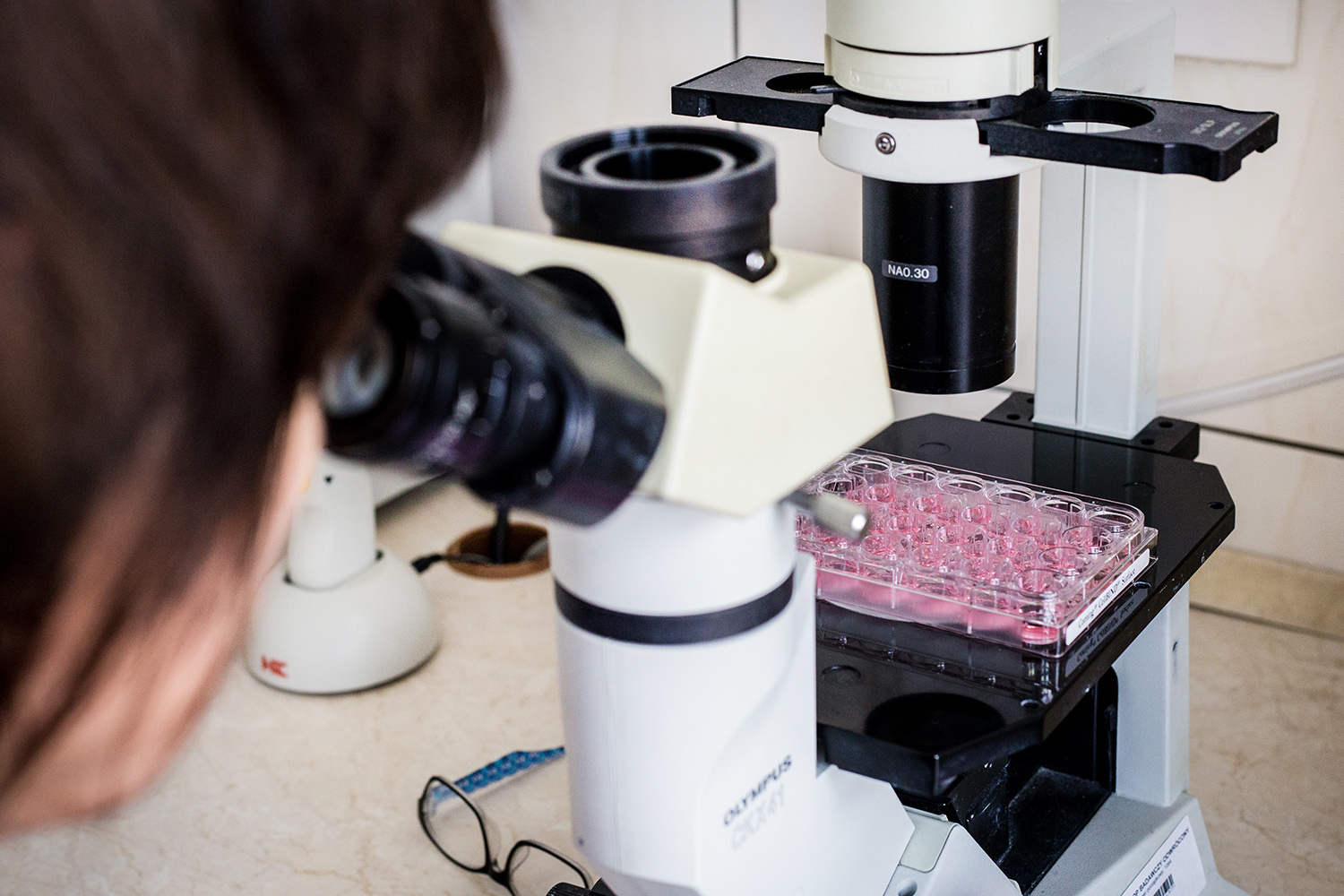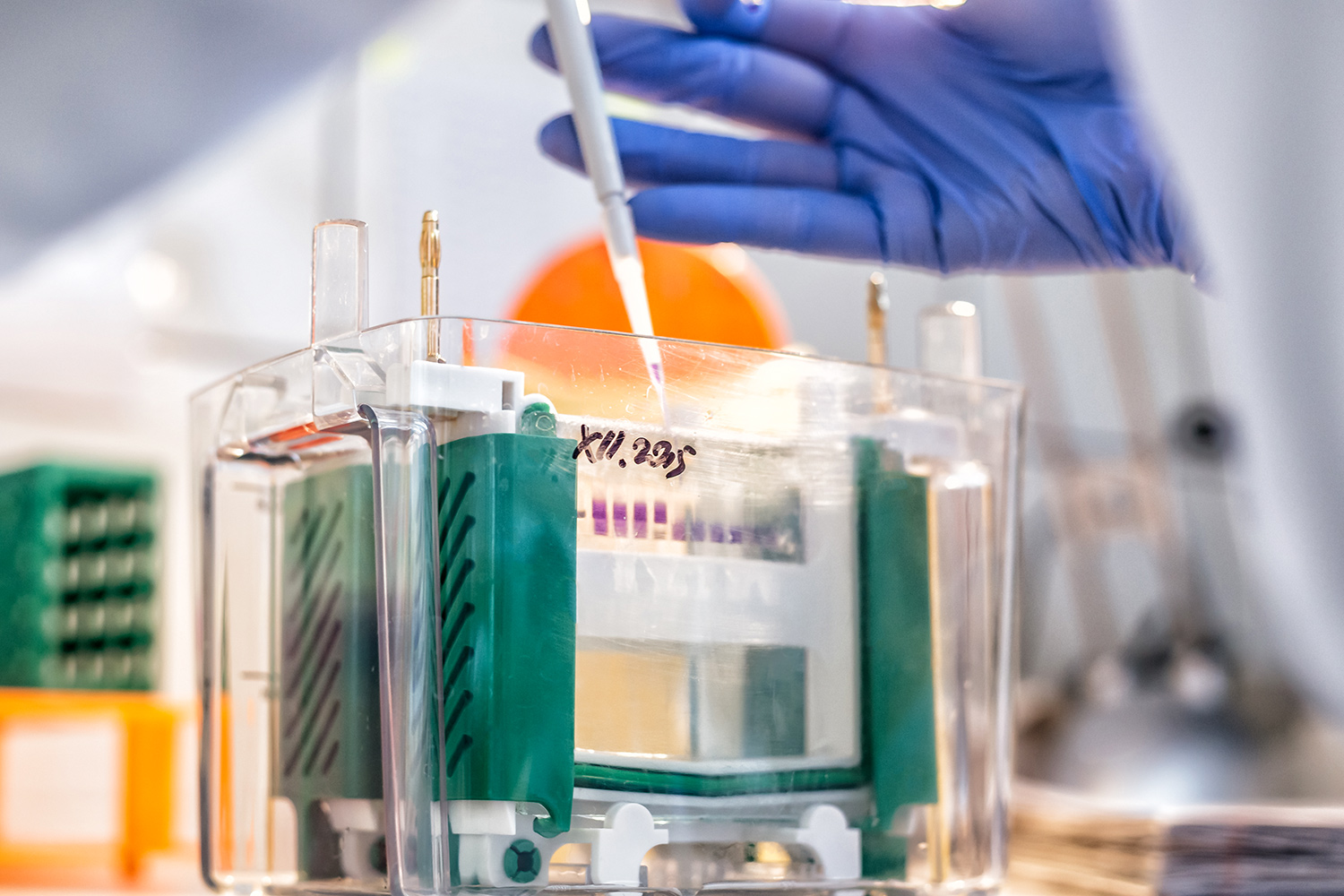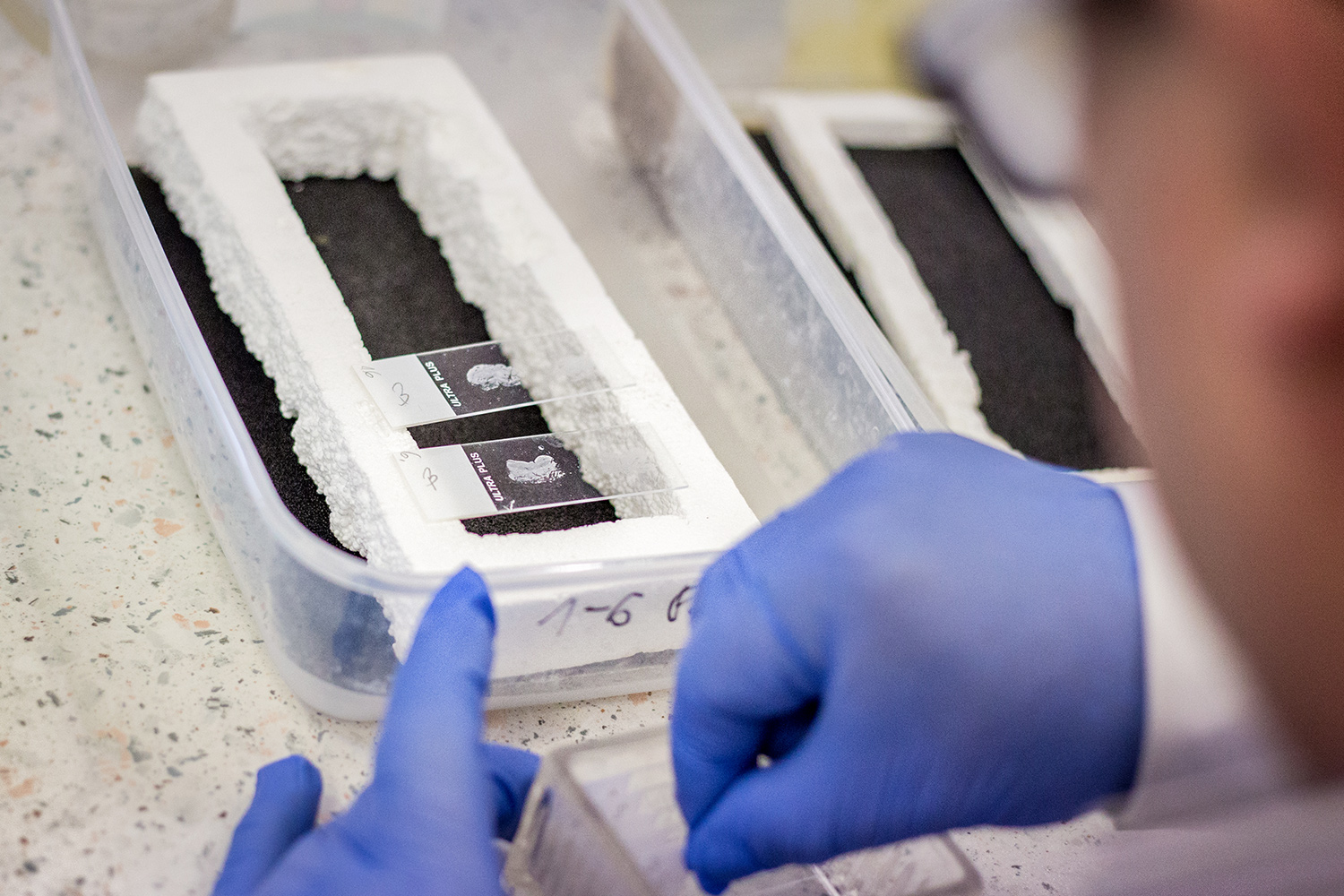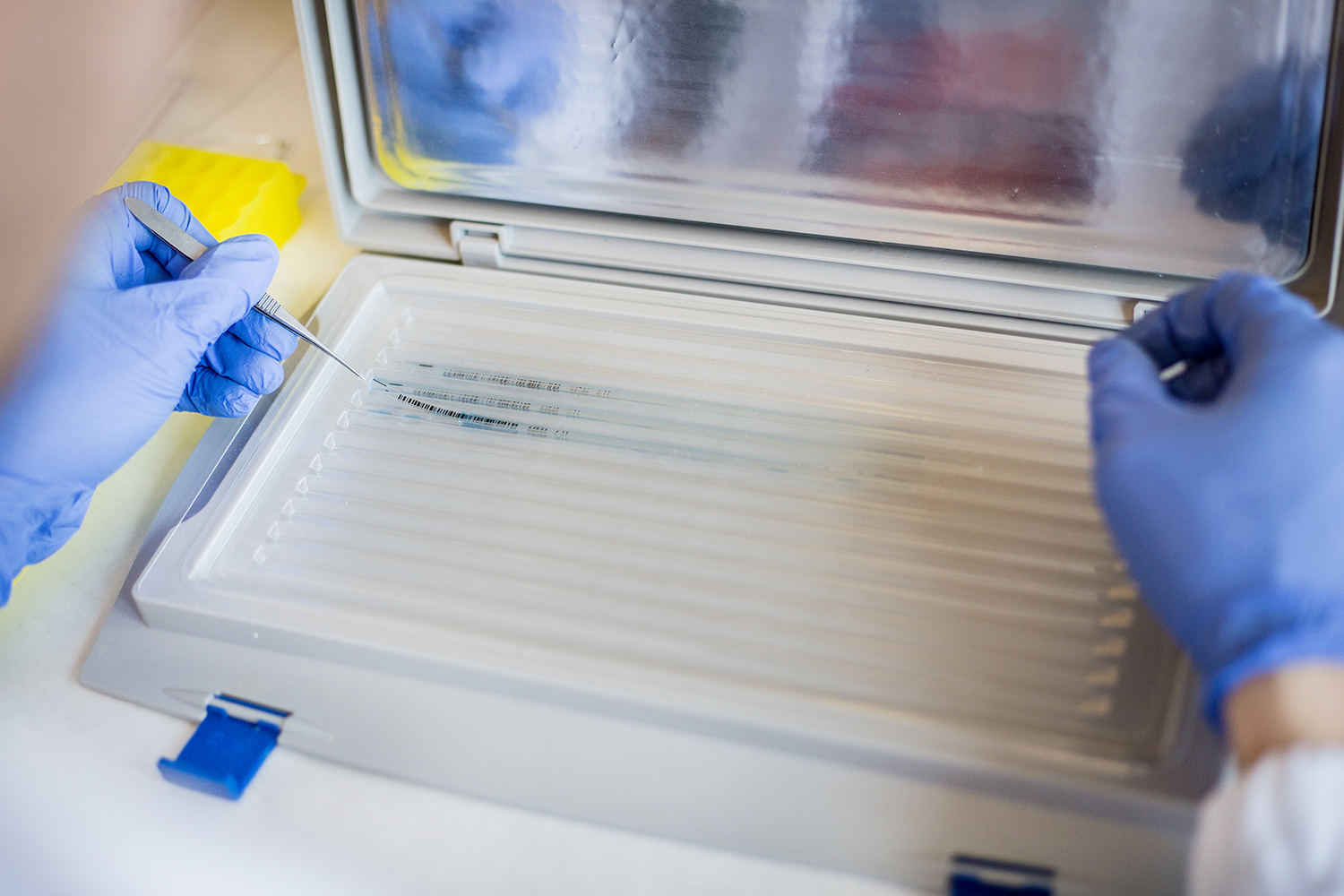in Physiology of Reproduction:
-
Nitric Oxide (NO) is the main auto/paracrine mediator of luteolytic actions of PGF2α and cytokines during corpus luetum (CL) regression in the farm animals. Enzymes involved in NO production are expressed in the CL of mare and cow dependently on the phase of estrous cycle. Nitric oxide inhibits progesterone (P4) secretion, stimulates prostaglandin secretion and induces CL cells apoptosis during luteolysis.
- The expression of tumor necrosis factor-α (TNFα) and its receptors in feline, bovine and equine uterus is dependent on the phase of estrous cycle and regulate the secretory functions of ovary and uterus during the cycle and early pregnancy. TNF differently modulates PGF2α and PGE2 secretion in uterus and ovary dependently on the phase of the estrous cycle. Moreover, in the cow in vivo, low concentrations of TNFα causes luteolysis, but high doses intensify corpus luteum (CL) activity and prolong the CL lifespan.
- We showed that non-specific mechanisms of innate immune system localized in the feline endometrium were not distinctively affected as a results of either 4 weeks or 4 to 12 months oral treatment with medroxyprogesterone acetate (MPA). The increasing concentrations of plasma prostacyclin (PGI2) as well as both prostaglandins (PGF2α and PGE2), were shown to be the valuable markers of endotoxemia and inflammation during pyometra in cats, much better than unaffected concentrations of leukotrienes (LTB4 and LTC4) or TNF-α. In the epithelial endometrial cells was present: lipopolisaccharide (LPS)-challenged TNF-α secretion, increased expressions of Toll-like receptors (TLRs) and TNF/TNFR1 as well as increased synthesis of prostaglandins. Based on our results, the endometrial epithelial, but not stromal cells, were identified as the main cells responsible for the initial defence against invading pathogens.
- We confirmed that feline placenta poses an active molecular tools responsible for steroidobiogenesis. We also showed that concentrations of placental progesterone are mirrored by plasma progesterone in the course of pregnancy in the domestic cat. We confirmed the presence of StAR protein and 3-βHSD in the decidual cells of placenta. Besides of this, we showed that feline placenta is a source of PGF2α. This placental PGF2α is assumed to play a key role in luteolysis in the periparturient females, since the differences in the expressions of either intraluteal prostaglandins receptors or synthases between pregnant or pseudopregnant cats were not shown. The increased concentrations of either plasma PGFM or placental PGF2α were observed in the last week of pregnancy. Surprisingly, the protein and mRNA expression of PGFS (which presents 87% of homology with AKR1C3) and PGES was increased during first 2.5 to 3 weeks of pregnancy and gradually dropped down towards end of pregnancy. The pattern of PTGS2 expression was similar to the plasma concentration of PGFM and placental concentration of PGF2α.
- Lysophosphatidic acid (LPA) plays auto-paracrine role in the bovine CL and uterus. We demonstrated the LPA and LPARs are presence in bovine uterus and CL. Lysophosphatidic acid stimulates luteotropic PGE2 production in cultured stromal endometrial cells, however inhibits luteolytic PGF2α synthesis in epithelial cells. Additionally, LPA stimulates P4 secretion from luteal CL cells of the mid luteal phase.
- Glikokortykosteroids (GCs) play role as local mediators of the bovine uterus functions modulating prostaglandins secretion. In early pregnancy cortisol can serve as a mediator of luteotropic action of INFτ stimulates P4 and PGE2 secretion supporting CL functions and the early pregnancy development.
-
Leukotrienes (LT) play roles in auto/paracrine mechanisms regulation ovaries and endometrium during the estrous cycle and early pregnancy in cows. Leukotrienes modulates prostaglandin secretion in CL and uterus during the estrous cycle and early pregnancy. Moreover, LT stimulates progesterone, 17β-estradiol and PGF2α secretion in follicular granulosa cells.
in Pathology of Reproduction:
- It has been shown that neutrophils (PMN) and extracellular network neutrophils (NETs), induced during persistent post-insemination endometritis can be the cause of dysfunction of secretory and structural endometrial fuctiona and are involved in the pathogenesis of endometrial fibrosis in mares (degenerative persisyen endometritis; endometrosis). In response to infectious agents, neutrophils form NETs, which additionaly to protection against the spread of pathogens, may also be responsible for the anti-inflammatory response, kill bacteria, but also cause tissue damage. NETs elements (ELA, CAT, CTGF, MPO), prostaglandins and cytokines are involved in pathogenesis of endometrial fibrosis in mares (endometrosis).
- The expression of PG synthases, interleukin and their receptors changed in the course of endometriosis in the mare. There are endometrial secretory changes in the course of this disease. The secretion of PG in response to factors alters depending the endometrosis stage.
- We proposed the diagnostic schemes for the sub-fertile mares, including mares that do not become pregnant, loss embryo or miscarriaged. Our studies showed: i) that either cytologic smears performed by usage of a cytobrush or endometrial biopsies have a good predictive value for diagnosing of endometritis; ii) the presence of neutrophils in the cytological smear is a good predictive marker of inflammatory conditions in equine uterus. The presence of at least 2% of neutrophils in endometrium is a valuable and predictive marker of endometritis; iii) during subclinical endometritis, dependently on the severity of inflammation connects with the neutrophils influx, the changes in the expression of: Toll-like receptors 2 and 4, TNF-α, IL-1β and IL-6 are observed. In the course of endometritis, the fluctuations of the secretory functions, including synthesis and secretion of the prostaglandins, prostacyclin and leukotrienes are observed.
- In the studies concerning the participation of arachidonic acid (AA) metabolites in contractility of the inflamed porcine uterus it was revealed that PGF2α, PGI2, LTC4 and LTD4 increase, while PGE2 decreases the contraction intensity and frequency acting via subtype of receptors – EP2 and EP4. Moreover, we found that PGF2α and PGI2 influence on myometrial contraction activity not only through their receptors but also through receptors for other prostanoids.
- The inflammatory processes in the porcine and bovine endometrium lead to changes the secretion function of the reproductive tract. In the pig, LH, PRL and estrogens are decreasing and androstendion is rising under endometritis. In both species inflammation of endometrium causes severe disturbances in the AA metabolism and NO production. We demonstrated that during endometritis in pigs and cows change the secretion of PGE2, PGF2α and leukotriens(LT) B4 and LTC4, and expression of LT receptors (CysLT(1)R, Cyst(2)R, LTB4R1). It was also revealed that changes in the secretion of mentioned above factors and also PGI2 in the porcine inflamed uterus coincide with alterations in the expression and/or cellular localization of enzymes participating in their synthesis. Depending on the degree of changes in the secretion of PG and LT and their each other relation take place the different disturbances in the ovary function. The inflammatory processes caused by the bacteria in the endometrium and ovaries lead to the increase in NO production in these organs showing that NO participates in pathogenesis of the inflammation in porcine and bovine reproductive organs. The reduction in the number of nerve fibers in the vicinity of endometrial glands and blood vessels during endometritis induced by Escherichia coli infection in gilts was revealed.
- In the porcine cystic ovaries, the significant increase in the density of noradrenergic nerve fibers and in the content of catecholamines is accompanied by changes in steroidogenic activity, suggesting that these substances, by influence on the steroidogenesis, might affect the course of this pathological state. The alterations in the noradrenergic innervation pattern and steroidogenic activity of the cystic ovaries are partly dependent on phase of the estrous cycle in which the induction of the ovarian cysts is initiated. Moreover, the increase in the number of noradrenergic nerve fibers in the cystic ovaries is connected with up-regulation in the nerve growth factor (NGF) expression. Contrary to noradrenergic fibers, there is a decrease in the number of cholinergic nerve fibers in the cystic ovaries in pigs. In the pathologically-changed ovaries also we found changes in the distribution and numbers of nerve processes expressing markers of sensory neurons (SP, CGRP, GAL). It appears possible that neuropeptides released from these terminals may take part in the etiopathogenesis of cystic ovarian disease.
- Long-term E2 treatment (simulation of pathological states occurring with elevated estrogens levels) of adult gilts results to essential changes in the distribution and chemical coding of ovarian neurons in the dorsal root ganglia, caudal mesenteric ganglion, sympathetic chain ganglia, and in the paracervical ganglion, as well as in the population of intraovarian nerve fibers. Our findings suggest that hyperestrogenism caused by endogenous or exogenous estrogens, may regulate the transmission of sensory modalities from the ovary to the spinal cord, and gonadal function(s) by affecting ovary-projecting neurons.
- Cytokine (TNFα, IL-1α), NO and bacterial endotoxin (LPS) participate in pathogenesis of inflammation of bovine mammary gland via stimulation of PG and LT. Glikokortykosteroids are local anti-inflammatory agents in bovine mammary gland: cortisol produced local in mammary gland inhibited stimulated cytokine PG secretion.
- The isoflavones and their metabolites (phytoestrogens) affect on – disorder the secretory functions of uterus and CL in cows and mares during estrous cycle and early pregnancy.
- Demonstration that hormonal manipulation – synchronization of ovulation, depends on method and kind of substance used (especially analogue of PGF2α) reduced CL sensitivity on endogenous luteotropic factors.
Fig. 1. Regulation of reproduction system function. Influence of cytokine (TNFα), nitric oxide (NO), ovarian steroids and phytoestrogens on arachidonic acid metabolism during luteolysis and early pregnancy in cattle.
Fig.2. Hypothetical model of the structural and functional regression of the bovine corpus luteum [Skarzyński et al. 2005, 2008, 2010; review papers].
